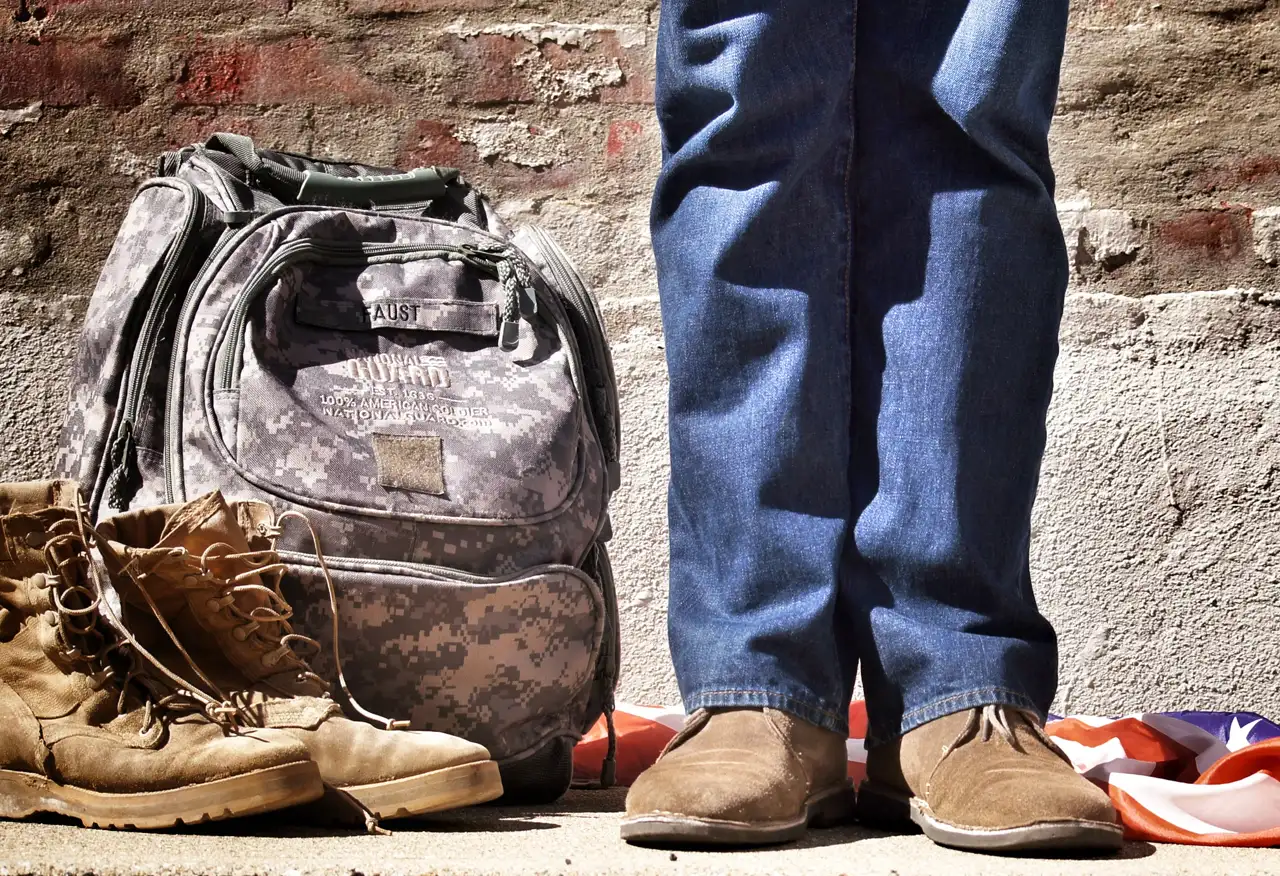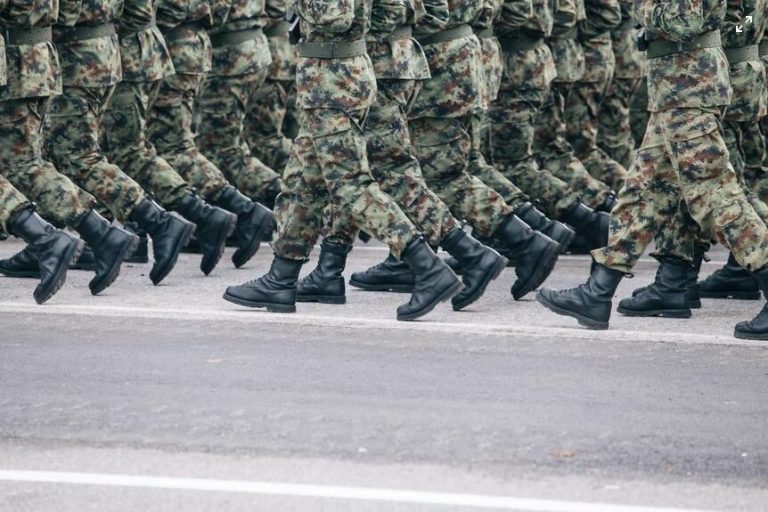Choosing the Right Military Insoles for Different Terrain: A Guide to Enhanced Comfort and Support
Choosing the right military insoles is crucial for individuals facing different types of terrain. The proper insoles can enhance comfort and support, making it easier to navigate challenging landscapes, whether rocky, muddy, or flat. Various insoles are designed to address specific needs, such as cushioning for rough trails or stability for uneven ground.
Military personnel often endure long hours on their feet. Selecting insoles that provide adequate shock absorption can help reduce fatigue and prevent injuries. Different features, such as material durability and arch support, play a significant role in ensuring that soldiers perform at their best during demanding missions.
Understanding how terrain affects foot comfort is key. For example, rugged terrain may require more cushioning, while flat surfaces may benefit from added stability and support. With the right knowledge about military insoles, individuals can make informed choices that will keep them comfortable and effective in the field.
Understanding the Importance of Proper Insoles for Military Personnel
Proper insoles are vital for military personnel. They play a key role in foot health and impact overall performance during demanding tasks. The right insoles provide support, shock absorption, and comfort, which are crucial when facing various terrains.
Foot Health and Combat Readiness
Foot health directly influences combat readiness. Soldiers spend long hours on their feet, often in challenging conditions. Poorly supported feet can lead to blisters, calluses, and other painful conditions.
Using high-quality insoles can minimize these risks. For example, insoles made from materials that offer both cushioning and stability can significantly reduce foot fatigue.
Key benefits include:
- Shock absorption to reduce stress on the feet
- Arch support to maintain proper foot alignment
- Moisture-wicking properties to keep feet dry
When feet are healthy, soldiers can focus better on their missions and respond swiftly to changing situations.
Terrain-Specific Challenges for Military Boots
Different terrains present unique challenges for military boots. Rocky, muddy, or uneven landscapes require specific support to maintain balance and prevent injury.
Insoles designed for rugged terrain help with shock absorption and stability. They improve grip and reduce the risk of slips and falls. For wet or muddy conditions, insoles that offer enhanced drainage and drying capabilities are essential.
Important features to consider for various terrains include:
- Cushioning for rocky surfaces
- Tread patterns designed for mud
- Breathability for hot climates
Choosing the right insoles addresses these challenges, allowing military personnel to perform optimally in any environment.
Analyzing Different Terrain Types
Understanding the various types of terrain is essential for selecting the right military insoles. Each environment presents unique challenges that affect foot comfort and performance. Here’s a closer look at how different terrains impact insole selection.
Desert Environments

Desert terrain is characterized by sandy, dry conditions and extreme temperature changes between day and night. In this environment, it is crucial to choose insoles that offer moisture-wicking properties to help keep feet dry and comfortable. Additionally, insoles with antimicrobial treatments can prevent odors from developing.
Support is important in the desert, so insoles with adequate arch support help to counteract fatigue. Choosing a lightweight material can also reduce the overall weight of the gear, enhancing mobility. Foam insoles that provide cushioning without bulk is often ideal for long treks across unforgiving landscapes.
Mountainous Regions

Mountainous terrain features steep inclines, rocky paths, and unpredictable weather. Insoles selected for this type of environment should focus on stability and support. A firmer insole made from high-density materials can provide the necessary support to maintain balance on uneven surfaces.
Good shock-absorption is vital, especially during descents. Insoles with extra cushioning help absorb impact to prevent foot strain. Additionally, materials that resist moisture and temperature changes are beneficial, as conditions can shift rapidly in mountainous areas.
Jungle and Forest Terrains

Jungle and forest terrains often include damp and muddy conditions. It is essential to choose insoles designed for traction and drainage. Insoles with a textured surface can help maintain grip on slippery surfaces, reducing the risk of slips and falls.
Moisture-wicking and quick-drying materials should be prioritized to keep feet dry and combat fungal infections. Many individuals prefer insoles with additional cushioning for comfort during long marches through thick underbrush. This cushioning helps to absorb shocks from uneven ground and helps prevent fatigue.
Urban and Constructed Areas

Urban environments present unique challenges like hard surfaces and long periods of standing or walking. Insoles with excellent shock absorption are critical to minimize fatigue during extended use. Memory foam insoles are suitable for this, as they conform to the foot’s shape and provide custom comfort.
Support for arches is essential to prevent pain in feet and legs, especially in individuals with flat feet. Individuals may also choose insoles that offer additional cushioning for heels. Lastly, opting for insoles with breathable materials helps keep feet cool during long urban missions.
Arctic and Cold Weather Conditions
In cold weather environments, maintaining warmth and dryness is paramount. Insulating insoles designed for cold resistance are essential to keep feet comfortable. Materials like wool or specialized synthetic fibers offer warmth while allowing for breathability.
Water-resistant properties are also vital to prevent moisture from seeping into the boots. Additionally, cushioning is important to ensure comfort during long periods of activity on cold, hard surfaces. Selecting insoles that balance insulation with support can enhance mobility and overall performance in harsh conditions.
Materials and Technologies in Insole Design
Choosing the right materials and technologies in insole design is crucial for military personnel. Performance, comfort, and protection depend on the appropriate selection of fabrics, cushioning, and durability features. This section explores key elements that enhance insole functionality across various terrains.
Breathable Fabrics and Moisture Management
Breathable fabrics play a vital role in insole design. These materials enhance airflow, which helps regulate temperature inside the boot. Good moisture management is essential for keeping feet dry, preventing blisters and discomfort.
Several materials, such as mesh and special synthetic textiles, are known for their breathability. They wick sweat away from the foot while allowing air to circulate. This feature is particularly important in hot and humid environments. A combination of breathable fabrics can significantly improve overall foot health during extended periods of wear.
Shock Absorption and Cushioning
Shock absorption is key for military insoles, especially in demanding environments. Effective cushioning reduces the impact on the feet, ankles, and legs during movement. This is crucial for preventing fatigue and injuries.
Materials like EVA (Ethylene Vinyl Acetate) offer excellent shock absorption and comfort. Gel-based insoles provide added pressure relief, while memory foam conforms to the foot’s shape, providing personalized support. A balance between firmness and softness is necessary to maintain stability during active movements.
Durability and Abrasion Resistance
Durability is essential for military insoles since they must withstand rigorous use. Insoles should be made from materials that resist wear and tear. High-mileage options, like specially designed synthetics, are ideal for long-term performance.
Abrasion resistance is another critical factor. Insoles that endure rugged terrains require robust materials that can handle friction and pressure. Using advanced manufacturing techniques enhances the durability of insoles, ensuring that they can perform effectively over time without degrading quickly.
Heat Retention and Insulation
In colder environments, heat retention is important for maintaining comfort and functionality. Insulated insoles help to trap warmth while allowing moisture to escape. This is key for soldiers who may be exposed to extreme conditions.
Materials like felt or specialized insulating foam provide warmth without adding significant bulk. Using these materials can help to keep feet warm during prolonged outdoor missions, contributing to overall performance and comfort. Proper insulation also plays a role in preventing frostbite and other cold-related injuries.
Insole Features for Enhanced Performance
Choosing the right insoles involves understanding specific features that can greatly enhance performance in various terrains. Key aspects include support for the arch, stability for the heel, ample space for the toes, and properties that combat odor and bacteria.
Arch Support and Alignment
Adequate arch support is crucial for maintaining foot alignment. It helps distribute weight evenly, reducing stress on the feet and lower body. Insoles with contoured arch support can alleviate strain and prevent injuries during long hikes or marches.
Individuals with flat feet or high arches may benefit from specialized insoles designed for their foot type. Custom-molded options can provide personalized support, ensuring that the foot remains in the correct position. This proper alignment improves overall balance and reduces fatigue.
Heel Stabilization and Control
Heel stabilization is vital for minimizing movement within the boot. Insoles with a deep heel cup can secure the heel, which enhances stability. This feature helps prevent blisters and other issues that can arise from excessive movement.
A well-designed insole will also provide shock absorption, which is essential when traversing rocky or uneven surfaces. The right insoles can significantly reduce the impact on the heel, promoting comfort and reducing the risk of injuries.
Toe Box Considerations
The space in the toe box is important for foot health. An insole should not crowd the toes, as this can lead to discomfort or conditions such as metatarsalgia. Insoles with a wider toe area allow for natural toe splay, which can enhance balance and comfort.
Adequate cushioning in the toe region can also help absorb impact during movement. This is especially relevant in challenging terrains where the foot may experience abrupt changes in elevation or surface. Freedom for the toes leads to improved mobility and reduced fatigue in long-duration activities.
Antimicrobial Properties and Odor Control
Insoles with antimicrobial properties can significantly enhance comfort during extended wear. These specialized materials help prevent the growth of bacteria and fungi, which can cause odors and foot issues.
Materials that wick moisture away from the foot also contribute to a more pleasant experience. This feature keeps the feet dry and helps prevent blisters and other moisture-related conditions. Incorporating these materials into insoles provides an essential advantage, especially for military personnel who operate in diverse conditions.
Customization and Personalization of Insoles
Selecting the right insoles goes beyond picking a standard pair. Customization options can significantly enhance comfort and support for different terrains. The following methods can help tailor insoles to individual needs.
Custom Molding and Fit
Custom molded insoles are designed to match the unique contours of a person’s feet. This process often involves using heat or foam to create a bespoke fit.
- Heat Molding: The insole is heated and then placed inside the boot. As it cools, it conforms to the shape of the foot, providing personalized arch and heel support.
- Foam Impressions: Another method involves placing the foot on a foam insert. The foam compresses, allowing for a detailed impression. Once removed, this mold can be used to create a custom insole.
A personalized fit not only improves comfort but also reduces the risk of blisters andFoot fatigue.
Adjustable Insole Systems
Adjustable insole systems offer flexibility for different activities and terrain types. These systems often feature layers or components that can be added or removed based on specific needs.
- Layered Design: Some insoles come with multiple layers that provide varying degrees of cushioning and support. Users can adjust these layers to increase or decrease rigidity as needed.
- Arch Supports: Many adjustable systems include removable arch supports that can cater to high, low, or neutral arches. This ensures that the insole can meet diverse foot types, maximizing comfort and stability.
This adaptability allows military personnel to fine-tune their insoles for specific missions or terrain challenges.
Interchangeable Insole Components
Interchangeable insole components provide a unique way to customize support based on varying conditions. These components can focus on areas needing extra attention, such as the heel or arch.
- Heel Cups: Users can replace heel cups to improve shock absorption during intense activities. Choosing a firmer or softer heel cup can change the level of support provided.
- Arch Inserts: Different arch inserts can be swapped out to cater to the varying conditions encountered during missions. Whether facing rocky terrain or flat surfaces, users can select what best suits their needs.
Interchangeable components allow for ongoing adjustments, ensuring maximum comfort and performance in changing environments.
Fitting and Replacing Military Insoles
Fitting and replacing military insoles is essential for maintaining comfort and foot health. Proper assessment and timely replacement can prevent discomfort and enhance performance during demanding activities.
Assessing Insole Lifetime
Insoles generally last between 6 to 12 months, depending on usage and terrain. Regular checks for wear and tear help determine their condition. Signs to look for include:
- Cracks or tears: Visible damage may reduce support.
- Flattened areas: Loss of cushioning affects comfort.
- Bad odors: Foul smells can indicate bacteria buildup.
When the insole feels less supportive and comfort decreases, it is time for a replacement. Don’t wait until discomfort becomes a problem. Staying proactive about insole assessments keeps feet in good condition.
Step-by-Step Guide for Insole Replacement
Replacing insoles is straightforward. Here’s a simple guide to follow:
- Remove the old insole: Take out the existing insole from the boot.
- Clean the boot: Wipe the inside of the boot to remove dirt and debris.
- Select the right insole: Choose an insole that fits the specific terrain and activity level.
- Trim if needed: Some insoles may require trimming to fit perfectly. Use scissors for adjustments.
- Insert the new insole: Place the new insole into the boot, ensuring it fits snugly against the heel and arch.
By following these steps, individuals can ensure their insoles provide the necessary support and comfort. Regular replacement contributes to better foot health and performance in the field.
Case Studies and Insole Performance Reviews
Case studies of various insoles reveal how they perform under different conditions. This information helps users select the right insole for their specific needs.
A study on insoles used by soldiers in rugged terrain highlighted key factors:
- Arch Support: Essential for maintaining foot stability.
- Cushioning: Important for shock absorption during long marches.
- Durability: Must withstand high-mileage use, often exceeding 1,000 miles.
Performance Reviews:
- Roaming Feet Insoles:
- Offers specific designs for combat boots.
- Highlights foot health and hygiene.
- Recommended for demanding missions.
- 5.11 Tactical Insoles:
- Designed for military and law enforcement.
- Provides excellent support for cross-training.
- Known for high durability.
- Upstep Military Insoles:
- Focuses on cushioning and stability.
- Effective in reducing foot fatigue.
- Rated well for long-distance use.
Insoles can greatly impact a soldier’s comfort and effectiveness. They can reduce fatigue and help prevent injuries, making them an important consideration for anyone in the field.
Integrating Insoles into Military Footwear Maintenance Routines
Insoles are crucial for comfort and support. Proper maintenance ensures they function well during missions.
Routine checks should include:
- Removing Insoles: After each use, take out the insoles for cleaning.
- Cleaning: Use mild soap and water to wash the insoles. Air dry them away from direct sunlight.
- Inspecting for Damage: Look for cracks or excessive wear. Replace insoles if they show significant signs of damage.
During regular boot maintenance, insoles should not be overlooked. Soldiers should rotate different sets of insoles to extend their lifespan. This also helps to adapt to various terrains and conditions.
Incorporating insoles into a footwear routine promotes long-term foot health. A checklist can be useful:
- Remove and clean insoles.
- Inspect insoles and boots for wear.
- Rotate insoles regularly.
- Ensure insoles fit snugly before putting on boots.
By integrating these practices, soldiers maintain their footwear effectively. This enhances performance and comfort in diverse environments.
Frequently Asked Questions
When selecting the right insoles for military boots, many factors come into play. Below are some common questions that can help clarify the best choices for different terrains and situations.
How can I determine the best insole fit for my military boots?
To find the best fit, a soldier should measure their foot size accurately, considering any width differences. They can then try various insoles to ensure proper arch support and comfort. A snug, but not tight, fit is essential to avoid blisters and maintain stability.
What are the advantages of full-length insoles over 3/4 length insoles for service members?
Full-length insoles provide complete foot coverage, which can enhance stability and support. They can help distribute weight evenly across the foot, minimizing pressure points. This makes them particularly beneficial during long missions or extended wear in the field.
Are there specialized insoles recommended for high-impact activities such as rucking?
Yes, specialized insoles designed for high-impact activities offer extra cushioning and support. These insoles can absorb shock effectively, reducing fatigue during demanding exercises like rucking. Choosing insoles with strong arch support can also prevent injuries during intense movements.
Is it possible to use aftermarket insoles in standard military boots, and what should I consider?
Aftermarket insoles can be used in standard military boots, often enhancing comfort. It is important to check compatibility with the boot’s design and fit. Ensuring that the insole does not make the boot too tight is crucial for maintaining foot health.
What features should I look for in insoles to support extended wear in challenging terrains?
Insoles designed for extended wear should include cushioning, arch support, and moisture-wicking materials. Durability is also crucial, as they should withstand rough conditions. Additionally, lightweight designs can reduce fatigue during long hikes or missions.
How do insole material and design affect foot comfort and stability for military personnel?
The material of the insole impacts comfort and support significantly. High-quality foam materials provide cushioning, while firmer options enhance stability. A well-designed insole will conform to the foot’s shape, promoting better posture and reducing the risk of injuries.


